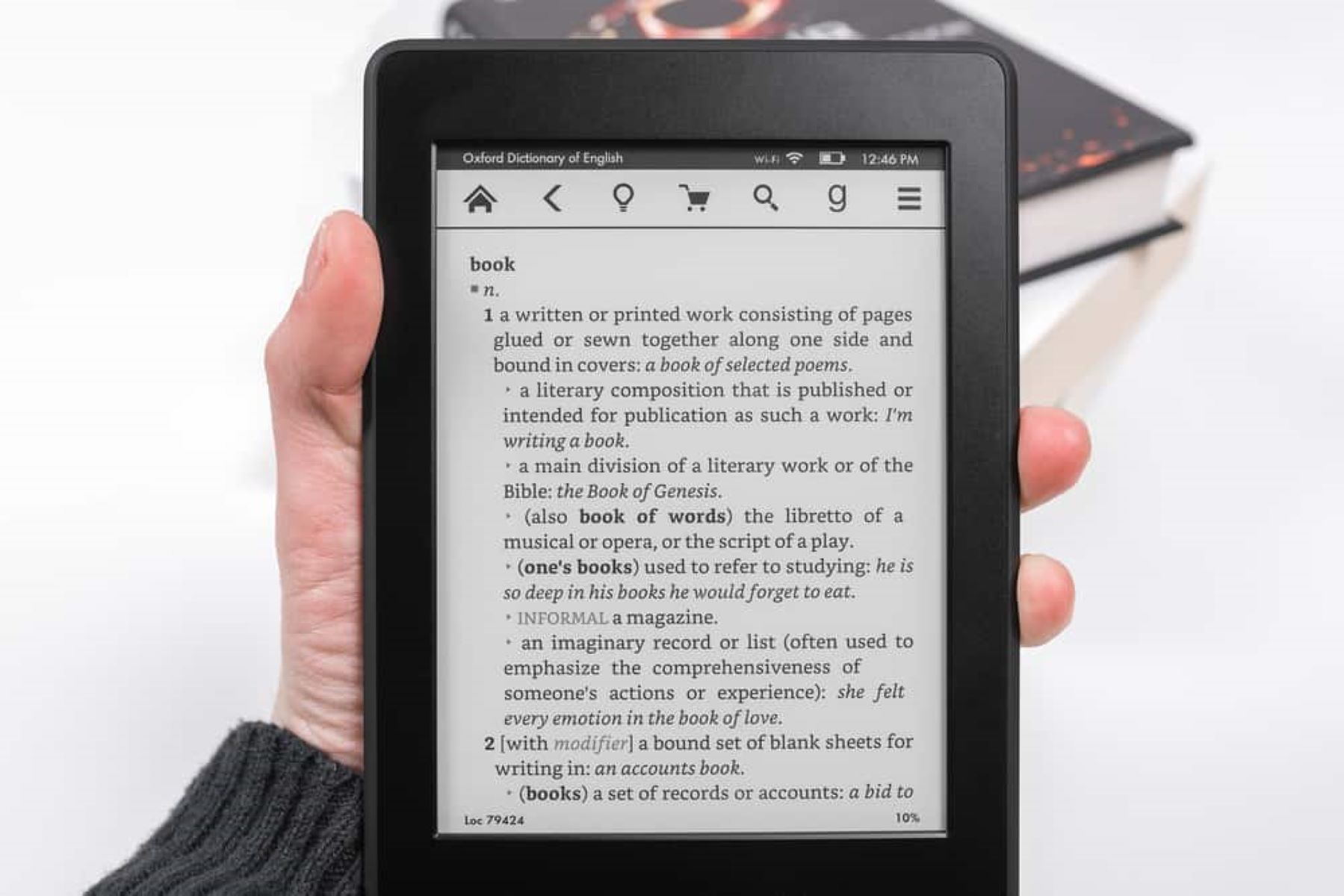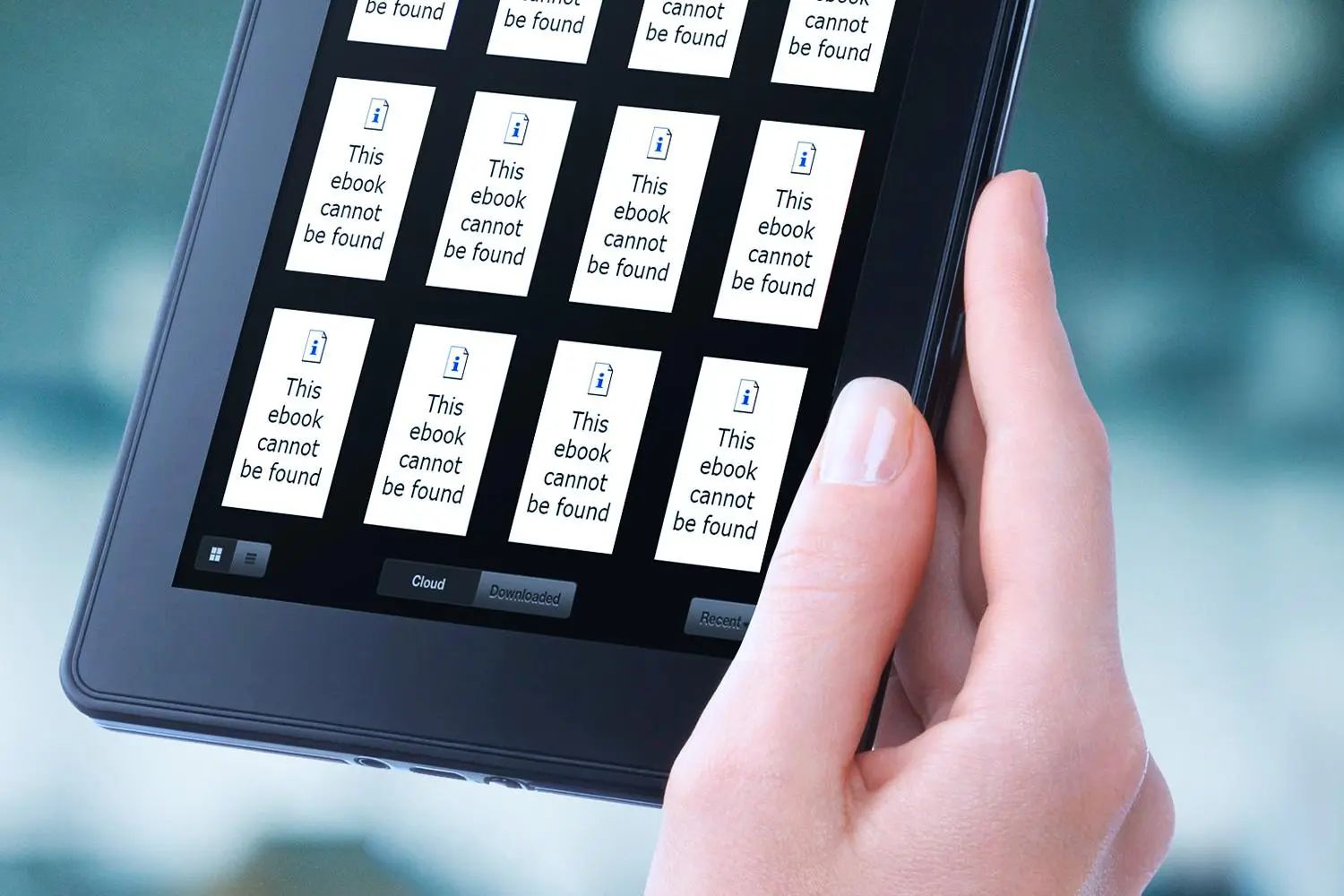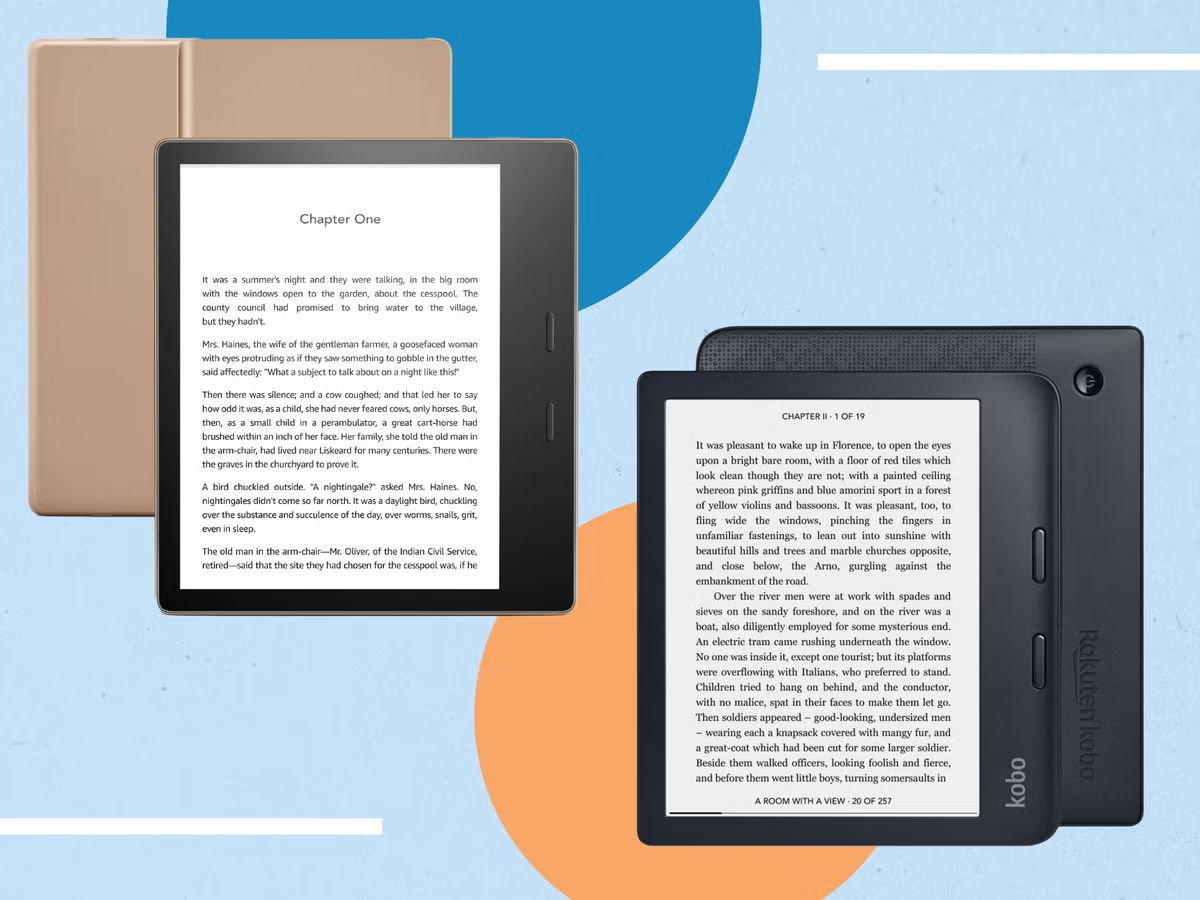Introduction
So, you’ve got an eBook on your Kindle device and you want to print it out? Maybe you prefer the feeling of flipping through the pages of a physical book or want to make annotations and highlights on paper. Whatever your reason, printing an eBook from a Kindle is indeed possible.
In this guide, we will walk you through the step-by-step process of how to print an eBook from your Kindle device. We’ll cover everything from preparing the eBook for printing to troubleshooting common issues that you may encounter along the way.
Before we dive into the details, it’s essential to note that the ability to print an eBook might vary depending on the format and DRM (Digital Rights Management) restrictions imposed by the publisher. Some eBooks may not allow printing at all, while others may have limitations on the number of pages you can print.
That being said, if your eBook permits printing, let’s get started with the process!
First and foremost, before printing an eBook, it’s essential to consider the legal aspects. Ensure that you own the rights to print the eBook or that it is in the public domain or has a Creative Commons license allowing for printing. It’s important to respect copyright laws and avoid any unauthorized reproduction of content.
Now that we have the legalities covered let’s move on to the steps you need to follow to print your eBook from a Kindle device. We’ll cover everything you need to know, from preparing the eBook for printing to choosing the right printing method for your needs.
Step 1: Prepare the Kindle eBook for printing
Before you can start printing your eBook from your Kindle device, you’ll need to make a few preparations to ensure that the printing process goes smoothly. Here are the steps you need to follow:
1. Check the printing permissions: Before proceeding, ensure that the eBook you want to print allows for printing. Some eBooks may have printing restrictions imposed by the publisher or may not allow printing at all. You can check the permissions by navigating to the eBook’s details page on your Kindle device or app.
2. Review the eBook’s formatting: Take a quick look at the eBook’s formatting to ensure that it will translate well into print. Sometimes, eBooks have complex layouts, graphical elements, or interactive features that might not translate smoothly onto printed pages. If you encounter any formatting issues, you may need to consider alternative methods for printing or converting the eBook to a compatible format.
3. Remove unnecessary elements: If you want to print only specific sections of the eBook or exclude certain elements, such as images or footnotes, you can use the Kindle Reading App’s highlighting and note-taking features to mark the sections you want to include. You can then export those sections separately for printing or use a conversion tool to extract them from the eBook.
4. Adjust font size and layout: Depending on your printing preferences, you might want to adjust the font size and layout of the eBook before printing. Kindle devices and apps offer options to customize the font size and style. Experiment with different settings to find the most readable and printer-friendly format.
5. Consider reformatting the eBook: If the eBook’s formatting doesn’t translate well into print or if you want more control over the appearance of the printed pages, you can consider reformatting the eBook. There are various tools and software available that allow you to convert eBooks to formats like PDF or EPUB, which provide more control over layout and design.
By following these steps and taking the time to prepare your Kindle eBook for printing, you can ensure a smoother and more efficient printing process. Once you have everything in place, you’ll be ready to move on to the next step: converting the eBook to a printable format.
Step 2: Convert the Kindle eBook to a printable format
Once you have prepared your Kindle eBook for printing, the next step is to convert it to a printable format. This step is necessary because Kindle eBooks are typically in a proprietary format that may not be compatible with standard printing methods. Here’s how you can convert your eBook:
1. Use an eBook conversion tool: There are several eBook conversion tools available online that can help you convert your Kindle eBook to a printable format like PDF. These tools typically allow you to upload your eBook file and choose the desired output format. Once the conversion is complete, you’ll have a digital copy of your eBook that is suitable for printing.
2. Consider using software: If you prefer more control over the conversion process, you can use dedicated eBook management software like Calibre. These software tools offer advanced options for converting eBooks and customizing the output format according to your printing needs. They also provide additional features like metadata management and eBook organization.
3. Check for formatting issues: After converting the eBook to a printable format, it’s important to review the resulting file for any formatting issues. Pay attention to page breaks, font sizes, and layout consistency. Make any necessary adjustments to ensure that the printed version of the eBook looks clean and professional.
4. Test the converted file: Before proceeding with the actual printing, it’s a good idea to test the converted file on your computer or a compatible device. This will allow you to verify that the eBook appears as intended and that all elements, such as images and footnotes, are properly displayed. Correct any discrepancies or errors that you may encounter.
5. Save a backup: Once you have successfully converted the Kindle eBook to a printable format and verified its accuracy, it’s crucial to save a backup copy of the file. This will ensure that you can easily access and print the eBook in the future, even if you make changes to the original eBook or lose access to the Kindle device.
By following these steps to convert your Kindle eBook to a printable format, you’ll be one step closer to printing out your favorite books and enjoying the tactile experience of reading them in print. Now that you have the converted file, you can proceed to the next step: connecting your Kindle device to a computer.
Step 3: Connect your Kindle device to a computer
In order to print an eBook from your Kindle device, you will need to connect it to a computer. This step is necessary to transfer the eBook file from your Kindle to your computer for printing. Here’s how you can connect your Kindle device:
1. Use a USB cable: Most Kindle devices come with a USB cable that allows you to connect them to a computer. Locate the USB port on your Kindle device and connect one end of the cable to it. Then, connect the other end of the cable to a USB port on your computer.
2. Confirm the connection: Once the Kindle device is connected to your computer, it should be recognized as a removable storage device. Depending on your computer’s operating system, you may receive a notification indicating that a device has been connected. Alternatively, you can check the file explorer or desktop for the Kindle device icon.
3. Enable USB mode: Some Kindle devices require you to enable USB mode manually. To do this, swipe down from the top of the Kindle’s screen and tap on the “USB Mode” option. Select “Enable USB Storage” or a similar option to allow the computer to access the Kindle’s content.
4. Verify the connection: Open the file explorer on your computer and look for the Kindle device icon or a new drive that represents the Kindle’s storage. Once you locate it, you can proceed to access the eBook files stored on your Kindle device.
5. Ensure the Kindle is charged: It’s important to ensure that your Kindle device has sufficient battery charge to complete the transfer process. If the battery is low, consider charging it before proceeding to avoid any interruptions during the file transfer.
Connecting your Kindle device to a computer establishes a direct connection that allows you to transfer files easily. Once you have successfully connected your Kindle device to your computer, you’re ready to move on to the next step: transferring the eBook from your Kindle to your computer.
Step 4: Transfer the eBook to your computer
Now that your Kindle device is connected to your computer, it’s time to transfer the eBook from your Kindle to your computer. By doing so, you’ll have the eBook file readily available for printing. Here’s how you can transfer the eBook:
1. Access the Kindle’s storage: Open the file explorer on your computer and navigate to the Kindle device or the newly recognized drive representing the Kindle’s storage. Double-click on the drive or the Kindle device icon to open it.
2. Locate the eBook file: Within the Kindle’s storage, navigate to the folder where the eBooks are stored. This folder is typically labeled “Documents” or “Books.” Open the folder and look for the eBook file you want to print. It will have a format extension like .azw, .mobi, or .epub.
3. Copy the eBook to your computer: Once you have located the eBook file, select it and right-click. From the options that appear, choose “Copy” or “Copy to” and navigate to the desired location on your computer where you want to save the eBook file. Right-click again in the destination folder and select “Paste” to initiate the file transfer.
4. Wait for the transfer to complete: The file transfer process may take a few moments, depending on the size of the eBook file and the speed of your computer. It’s important to wait until the transfer is complete and ensure that the eBook file is successfully copied to your computer.
5. Verify the transferred eBook: Once the transfer is finished, navigate to the destination folder on your computer where you pasted the eBook file. Verify that the file is present and check its properties to ensure that the file size matches the original eBook file on your Kindle device.
Transferring the eBook file from your Kindle to your computer completes the crucial step of making the eBook accessible for printing. Now that you have the eBook file saved on your computer, you’re ready to proceed to the next step: choosing a printing method that suits your needs.
Step 5: Choose a printing method
Once you have the eBook file saved on your computer, you have a variety of printing options to choose from. The printing method you select will depend on factors such as your preferred printing format, convenience, and the resources available to you. Here are a few options to consider:
1. Print from your home printer: If you have a printer at home, this is the most convenient option. Simply open the eBook file on your computer, select the desired pages or sections you want to print, adjust the printing settings (such as paper size and quality), and hit the print button. Make sure you have sufficient ink or toner and paper for the task.
2. Print at a local print shop: If you don’t have a printer at home or prefer professional printing services, consider visiting a local print shop. They have high-quality printers and can assist you with selecting the right paper type, binding options, and other customization preferences. Bring the eBook file on a USB drive or email it to the print shop for printing.
3. Use an online printing service: Several online printing services offer the convenience of printing eBooks from the comfort of your home. These services allow you to upload the eBook file, select printing options, and have the printed copies delivered to your doorstep. Compare prices and reviews to choose a reliable and trustworthy online printing service.
4. Use a print-on-demand service: Print-on-demand services enable you to create professional-quality printed books from your eBook. They offer options like cover customization, binding choices, and even distribution services. With print-on-demand, you can print a single copy or a small batch of books, making it ideal for self-published authors or those who want a physical copy for personal use.
5. Convert the eBook to a printable format and print: If you prefer more control over the printing process or want to format the eBook to your specific requirements, you can convert the eBook to a printable format like PDF and print it using professional design software. This option requires more advanced technical skills but provides greater customization possibilities.
Consider your printing needs, budget, and desired level of customization when selecting a printing method. Remember to check the eBook’s printing restrictions and make sure you comply with copyright laws. Once you’ve chosen a printing method, you can move on to the next step: printing the eBook from your computer.
Step 6: Print the eBook from your computer
With the eBook file on your computer and your preferred printing method selected, it’s time to proceed with printing your eBook. Printing from your computer offers flexibility and control over the printing process. Here’s how you can print the eBook from your computer:
1. Open the eBook file: Locate the eBook file on your computer that you transferred or converted in earlier steps. Double-click on the file to open it using an appropriate software or application that supports the eBook format. This will allow you to view and navigate through the eBook’s content.
2. Select the pages to print: Depending on your preferences, you might want to print the entire eBook or specific pages or chapters. Navigate to the desired section within the eBook or use the software’s page selection feature to specify the pages to print. You can also choose to print double-sided or single-sided pages.
3. Adjust printing settings: Before initiating the printing process, access the printer settings to customize the print options. You can modify settings like paper size, orientation, print quality, and color settings according to your preferences. Make sure to review these settings carefully to ensure the desired output.
4. Print a sample page: To ensure that the printed pages appear as intended and to avoid wasting paper and ink, consider printing a sample page first. This will allow you to verify the formatting, layout, and text readability. If any adjustments are needed, make the necessary changes in the printing settings before proceeding.
5. Initiate the printing process: Once you are satisfied with the sample page, proceed to print the rest of the pages. Click “Print” or a similar option within the software or application to start the printing process. Depending on the length and complexity of the eBook, it may take some time to complete the printing.
6. Monitor the printing process: While the eBook is being printed, keep an eye on the printing progress. Ensure that the printer is functioning properly, there is enough paper and ink, and there are no paper jams or other issues that can disrupt the printing process. If any problems arise, address them promptly to avoid any printing errors.
7. Organize and store the printed pages: Once the printing is complete, collect and organize the printed pages in the desired order or sequence. You may want to use a binder, folder, or other storage solutions to keep the pages organized and protected. Label the cover or spine of the printed eBook for easy identification.
By following these steps, you can successfully print your eBook from your computer and have a physical copy of your favorite book or valuable resource. Now it’s time to move on to the final step: troubleshooting common printing issues, if any arise.
Step 7: Troubleshooting common printing issues
While printing an eBook from your computer can be a relatively straightforward process, you may encounter a few common printing issues along the way. Here are some troubleshooting tips to help you address these problems:
1. Printing errors or distorted pages: If you notice errors or distorted pages in the printed output, ensure that your printer drivers are up to date. Try adjusting the print quality settings or selecting a different printer if available. Clean the printer heads or consult the printer’s user manual for specific troubleshooting steps.
2. Misaligned or cut-off content: If the printed pages have misaligned or cut-off content, double-check the print settings to ensure that the paper size and orientation match the page layout of the eBook. Adjust the margins or scaling options if necessary. If the problem persists, try using a different PDF reader or printing software.
3. Poor image or text quality: If the printed images or text appear blurry or pixelated, verify that you are using the appropriate print settings for your printer. Consider using a higher print quality option or selecting a different paper type. If the eBook contains low-resolution images, improving the image quality may require editing the original eBook file.
4. Pages printing out of order: If the pages print out of order, check the page numbering in the eBook and ensure that the sequential order is correct. Some eBook formats may have non-standard page numbering, so double-check the eBook’s table of contents or chapter structure to verify the correct page sequence.
5. Insufficient ink or toner: If the printed pages have faded or incomplete text or images, it may indicate that the printer’s ink or toner is running low. Check the ink or toner levels on your printer and replace or refill the cartridges if needed. Observe any error messages or lights on the printer that indicate low ink or toner levels.
6. Paper jams or feeding issues: If you experience paper jams or issues with paper feeding properly into the printer, check the paper tray for any misaligned or crumpled paper. Make sure that the paper is loaded correctly in the tray and within the specified size limits. Consult the printer’s user manual for instructions on resolving paper jam or feeding problems.
If you encounter any other issues while printing your eBook, refer to the printer’s user manual or contact the printer manufacturer’s support for further assistance. They can provide guidance specific to your printer model and help troubleshoot any technical difficulties you may encounter.
By addressing and resolving these common printing issues, you can ensure a smooth and successful printing experience for your eBook. Congratulations! You have now completed all the necessary steps to print an eBook from your Kindle device and enjoy the content in a printed format.
Conclusion
Congratulations on successfully printing your eBook from your Kindle device! By following the step-by-step process outlined in this guide, you have learned how to prepare the eBook for printing, convert it to a printable format, connect your Kindle device to a computer, transfer the eBook to your computer, choose a printing method, print the eBook from your computer, and troubleshoot common printing issues.
Printing an eBook allows you to experience the pleasure of reading in a physical format and gives you the ability to make annotations, highlights, and other personalizations on paper. Whether you prefer the convenience of printing at home, using a local print shop, or utilizing online printing services, there is a suitable printing method available to meet your needs.
Remember to comply with any copyright restrictions and ensure that you have the legal rights to print the eBook or that it is in the public domain. Respect the intellectual property of authors and publishers.
Throughout the process, you have also gained valuable knowledge on troubleshooting common printing issues, allowing you to overcome any obstacles that may arise during the printing process. By following the troubleshooting tips provided, you can resolve printing errors and achieve optimal results for your printed eBook.
Now that you have a physical copy of your eBook, you can enjoy the satisfaction of holding a tangible book in your hands, flipping through its pages, and fully immersing yourself in the content.
We hope this guide has been helpful in guiding you through the process of printing an eBook from your Kindle device. Enjoy your printed book and happy reading!

























